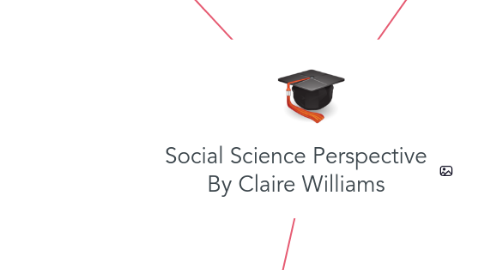
1. Phsycology
1.1. The study of human behaviour
1.2. It examines actions, responses, or factors that dictate reactions from an individual
1.3. It can provide insight to an individuals affect on society
1.4. Explores mental processes of a not only an individual but a group
1.5. Areas of Psychological Research: developmental, abnormal (deviance), clinical, social, organizational, cognitive, personality, environmental, educational, forensic, sports, and neuroscience
1.6. Sigmund Freud
1.6.1. The creator of psychoanalysis
1.6.2. Freud believes human behaviour is driven by desires or the suppression of them
1.6.3. Freud's three areas of our minds: the conscious, the pre- conscious and the unconscious
1.6.4. Thinks each person’s personality is motivated by drives.
1.6.4.1. Id
1.6.4.1.1. Part of unconscious which focuses on pleasure without worry of consequences
1.6.4.2. Super ego
1.6.4.2.1. Socially conscious of all decisions and actions that a person makes
1.6.4.3. Ego
1.6.4.3.1. A Mediator between Id and Superego
1.6.5. Believes main conflict in development revolves around the erogenous zone of the body (Areas of heightened sensitivity/sexual thoughts/feelings/arousal)
1.7. B.F. Skinner
1.7.1. Cares about the outward behaviours, rather than the unconscious drives
1.7.2. Believes we respond and develop due to external factors and stimuli
1.7.3. Skinner says that praise for good behaviour is most successful in producing long-term behavioural change
1.8. Erik Erikson
1.8.1. Erikson says there are stages in an individual’s life which are tasks that are to be met in order to have a develop
2. Guidelines
3. Sociology
3.1. The study of actions those within a specific society display.
3.2. It is considered a "complex structure" that continues to create and/or modify itself. Specific areas of society affect others wether it be directly or indirectly.
3.3. Sociologist look to understand beliefs and values of personalities that interact within a continuously recreated society
3.4. Sociology contains many sub-fields which examine all different dimensions of a society
3.5. Karl Marx - Marxism
3.5.1. Uses scientific methods to attempt to predict social outcomes in society
3.5.2. Karl Marx says production is "essential for the advancement of society."
3.5.3. Marx’s Labour Theory of Value says human productive power will eventually be exploited to maximize profits for the rich
3.5.4. Money and economics have driven forces in society
3.6. Talcott Parsons - Structural Functionalism
3.6.1. The quote “As much as things change they stay the same” is thought to be embraced in the theory of Structural Functionalism
3.6.2. Believed society creates structures from within that may assist in fundamental functioning requirements
3.6.3. Our society works to achieve a homeostasis. (relatively stable equilibrium between elements within its environment)
3.6.4. Every aspect of society contributes to functional success of one another. They rely on each other to contribute to their functions. If a part of a system stops working, a different component of society takes over the function of the missing structure, or assist in the recreation of the damages/in-able social structure
3.6.5. Deals with maintenance of a society, not change
3.7. Feminism
3.7.1. Liberal Feminists
3.7.1.1. Examine social institutions as well as address issues of equality when it comes to access, in order to increase women’s influence on society
3.7.2. Radical Feminists
3.7.2.1. Focuses on the issue of exploiting women
3.7.2.2. Seek change in patriarchal social structures through complete structural changes within the society in order to equalize women rights
3.7.3. Marxist Feminists
3.7.3.1. Focuses on the undervalue and underpayment of women in the workplace
3.7.3.2. Women being paid less ensures Male dominance therefore creates the “glass ceiling” for women that have a goal of rising in the social structure.
3.7.4. Socialist Feminists
3.7.4.1. Main focus is on the overthrow of the capitalist system of economics
3.7.4.2. Believe that the system is the real issue between male and female power struggles.
4. Anthropology
4.1. Studies all human culture with the holistic approach and how culture contributes to humanity
4.2. The science of people which studies their relation to origin, class, distribution, and relationships between races, physical character, and culture
4.3. Quantitative and qualitative methods are used for research as well as case studies.
4.4. Functionalism, Robert K Merton:
4.4.1. Margaret Mead
4.4.1.1. American anthropologist known as an author as well as a speaker in the media between the 1960s and 1970s
4.4.1.2. Mead found different patterns within the male and female behaviours in each culture she studied, all of which were different from expectations in America at that time.
4.4.1.3. She is said to be the first anthropologist that studied child-rearing practices as well as learning theory within the social groups.
4.4.2. Focused on the relationship of values shared between society and the institutions
4.4.3. “Self-fulfilling prophecy” - Merton
4.4.4. It is the method used to understand how social institutions can fill social needs.
4.4.5. Ruth Benedict
4.4.5.1. Benedict is another american anthropologist whose created theories which had a large influence on cultural anthropology, specifically culture and personality.
4.4.5.2. Believed in the idea of cultural relativism and supports the thought that every culture holds its own moral imperatives
4.5. Structuralism, Claude Levi Strauss, Mary Douglas:
4.5.1. People find comfort in the idea of predictability or familiarity
4.5.2. When a social idea is reinforced to make it a norm in society/increasese acceptance
4.5.3. Ex. North America values concept of love through celebrating Valentines Day, etc.
4.5.4. Structuralists believe meaning is produced in a culture through activities and practices that prove significance
4.5.5. Explains specific ideas becoming standard values
4.6. Cultural Materialism, Carlo Ember, Stephen Sanderson, Marvin Harris
4.6.1. Human existence is a response to problems in society
4.6.2. Human reproductions/procreation as well as productions/goods and services are within elements of our environment
4.6.3. Social beliefs are to be compatible with existing structures in an environment
4.6.4. Marvin Harris- Changes in technology or practice may create a shift in cultural beliefs from a society, and individuals have to adapt in order to thrive and survive in a changing environment

